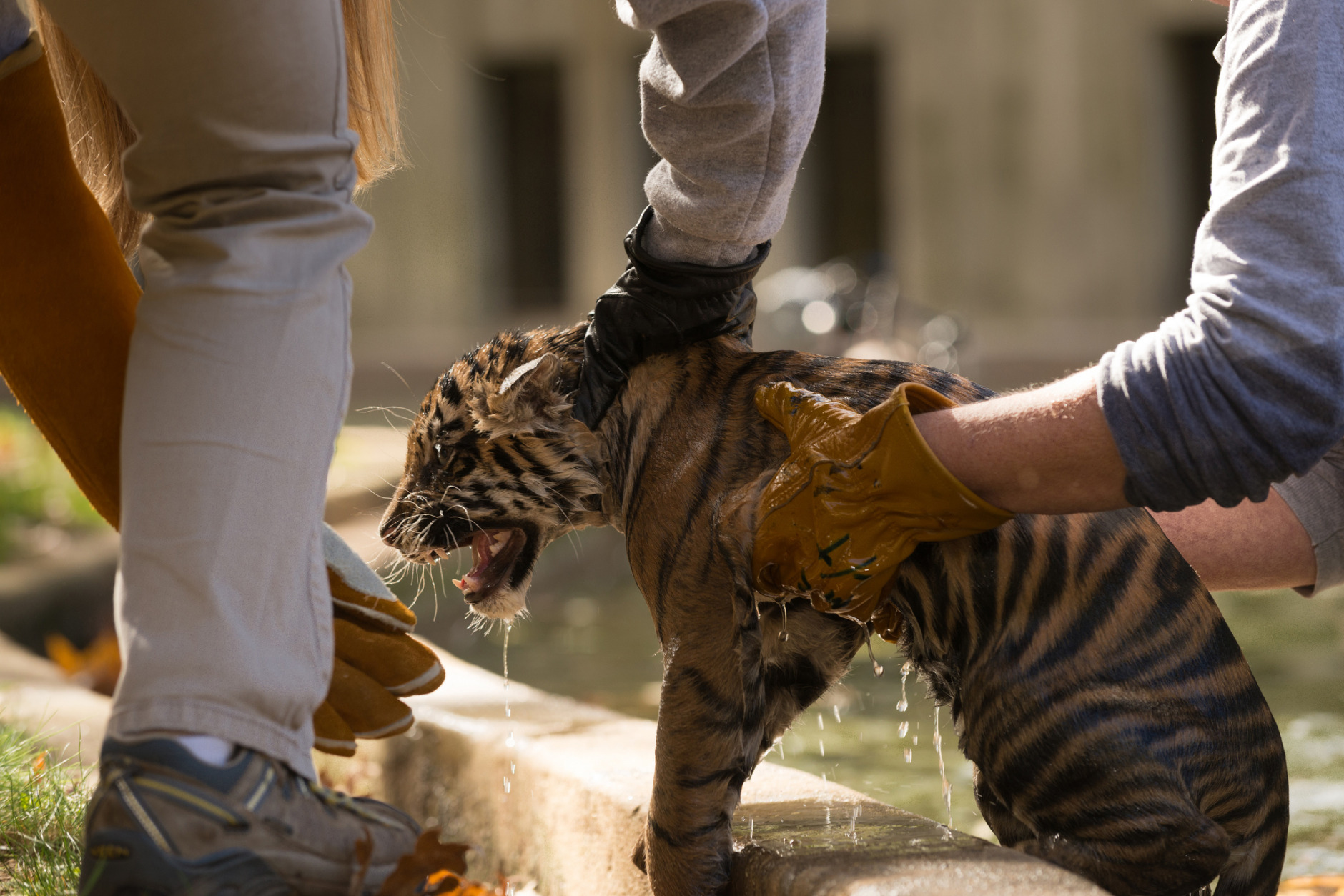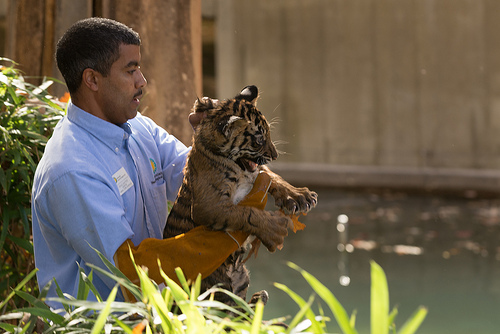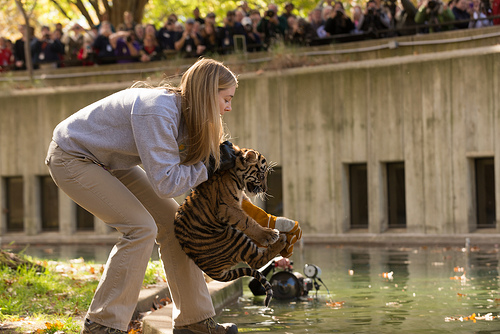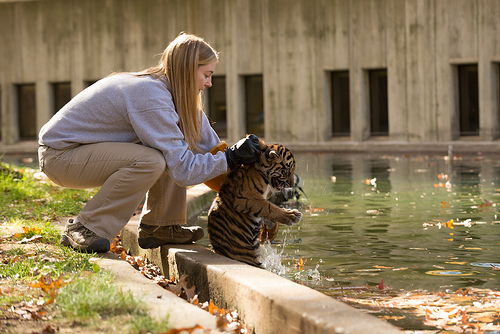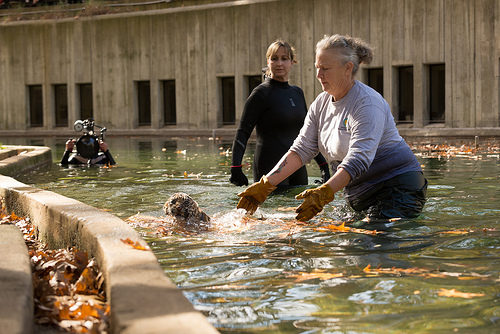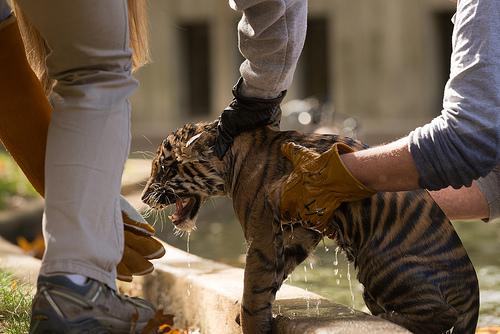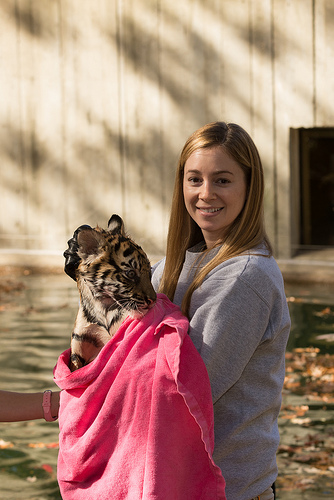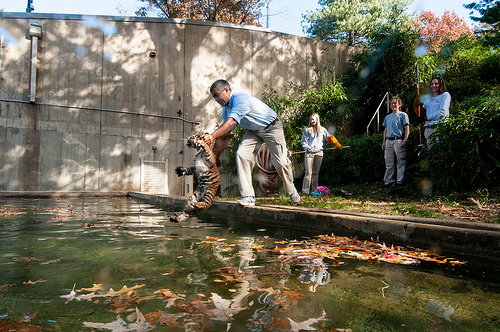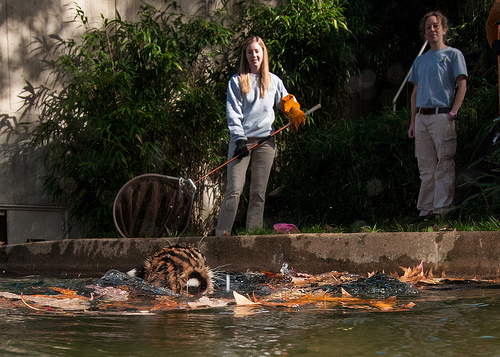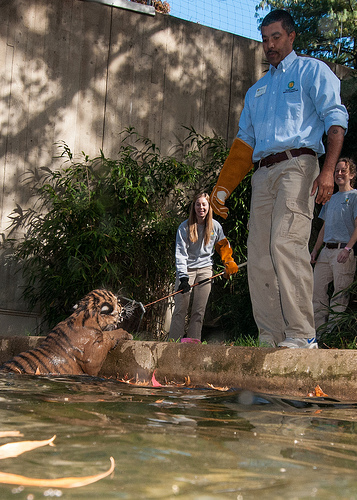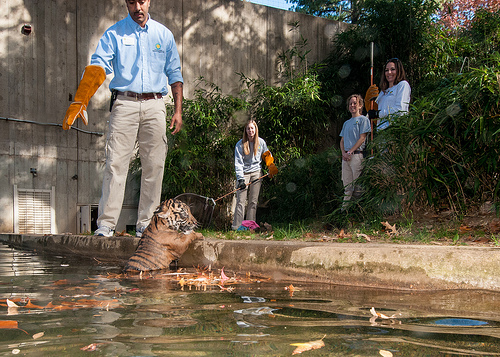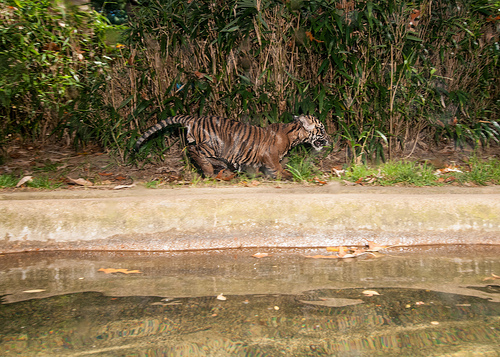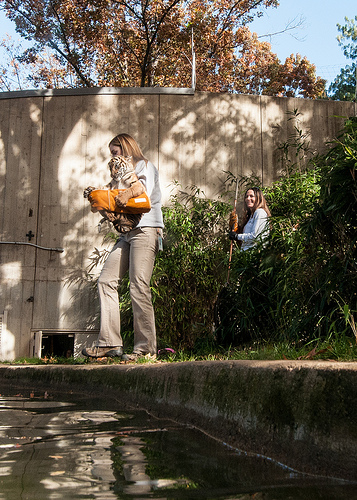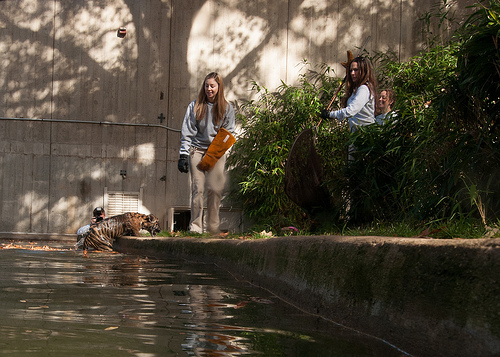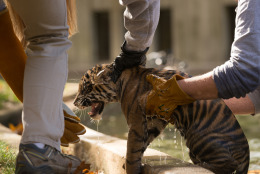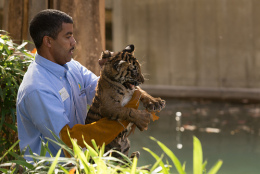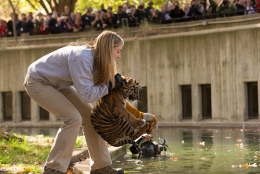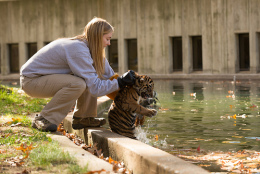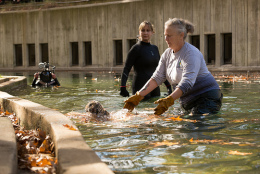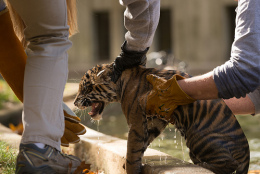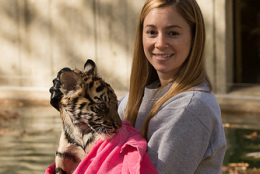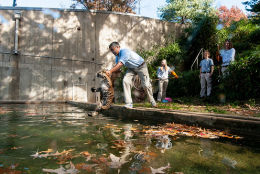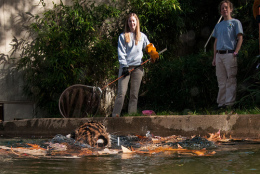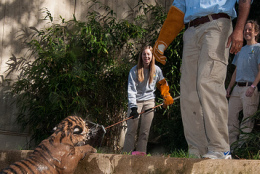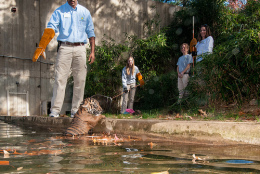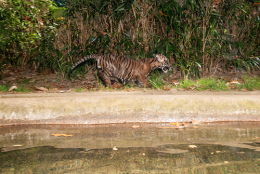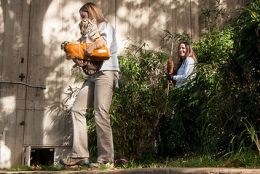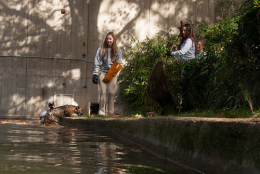WASHINGTON — The National Zoo’s Sumatran tiger cubs took a brisk swim on Wednesday morning and passed their “swim reliability test.”
Bandar and Sukacita, born Aug. 5, were able to keep their heads above water, navigate the shallow end and pull themselves out of the water, the zoo says on its Flickr page.
All cubs in the Great Cats exhibit have to pass the swimming test before they can go on exhibit in mid-November.
“This a very zoo-like thing to do it because there’s a lot of moat and grotto-like exhibits, and if an animal were to fall or get pushed or jump in the water we need to know they can get out safely,” says great cat animal keeper Dell Guglielmo.
Guglielmo was in the moat, in a wet suit, to make sure the cubs were safe.
“We were there in case that head did dip below water, and things didn’t go well, so we could scoop up a cat,” she says.
A moat wraps around the Great Cats enclosure and acts as a safety barrier between the cats and the public. The moat does get to nine feet in depth.
The icy water was cold and the cats were not happy to be plunked into it.
Male cub, Bandar, got out almost as soon as he was in. His sister, Sukacita, decided to swim further away from her instructors. But not without giving them an indication of her mood with a loud roar.
“We want to see that. We want to make sure we’re seeing from our animals that they don’t come to us for comfort. We’re not supposed to comfort them,” says curator Craig Saffoe.
He has worked with cats for 19 years at the Smithsonian National Zoo and says the Sumatran tiger cubs are the most self aware. Meaning, they understand that the humans are care-takers, not pseudo mothers.
“It’s encouraging [they] know not to be around us,” Saffoe says.
See the cubs swim here:
Tigers, among few big cats, like the water and can often be seen swimming in the moats at the National Zoo, Saffoe says.
“They will actively seek out water. As cubs, they’re not going to gravitate to it,” he says.
Thus, the need for the introduction.
Follow @WTOP on Twitter.

